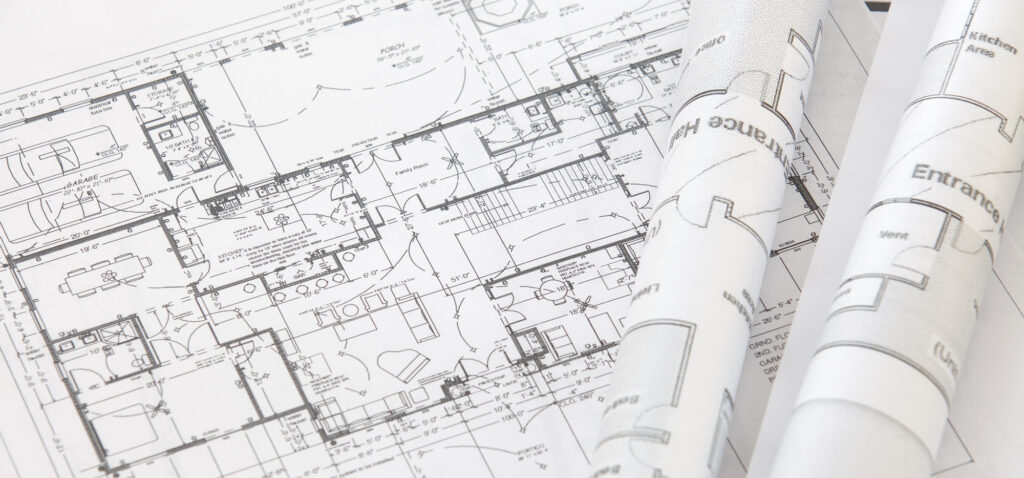Crafting your ideal home floor plan is thrilling and intricate, demanding a harmonious blend of style, practicality, and space optimization. This process involves aligning your design preferences with daily functional needs, ensuring every square foot is fully utilized, and creating a beautiful and livable space.
This guide aims to provide comprehensive insights and tips for navigating floor plan design intricacies of floor plan design, ensuring your home is beautiful and conducive to your lifestyle.
1. Understand The Basics Of Floor Plan Design
A floor plan is a scaled diagram of a room or building viewed from above. It typically includes measurements, furniture, appliances, and other essential elements. Floor plans are crucial in architecture and interior design as they provide a detailed overview of the space, including the relationships between rooms, spaces, and physical features.
When embarking on the journey of choosing a home design, especially for floor plans, it’s essential to consider several factors that will influence your decision. These include your family size, lifestyle, entertainment needs, and personal aesthetic preferences. A well thought out floor plan can significantly enhance your home’s functionality and flow, making daily life comfortable and efficient.
2. Consider Your Lifestyle
Tailoring your home’s floor plan to align with your lifestyle is essential for creating a space that truly feels like your own. For instance, families with young children may find value in open-plan designs that promote visibility and interaction, making it easier to watch kids while engaging in daily tasks. On the other hand, individuals or couples without children, including empty nesters, might opt for a single-story layout to avoid the hassle of stairs and streamline mobility.
Evaluating your routine activities, how you entertain guests, and your desire for private versus shared spaces can also significantly influence your floor plan, ensuring it supports your daily life comfortably and functionally.
3. Maximize Space And Flow
Maximize fluid movement throughout your home as a cornerstone of effective floor plan design. It involves thoughtful consideration of how spaces connect and transition into one another. Properly configured living areas, bedrooms, and even outdoor spaces can contribute to a sense of harmony and balance, making your dream home feel more expansive and welcoming.
Moreover, strategic natural lighting and window placement can dramatically improve the perception of space, making rooms feel larger and more inviting. By carefully planning the layout and considering how each area of your home interacts with the next, you can create an environment that feels cohesive and intuitively navigable.
4. Future-Proof Your Home
Designing your home with an eye towards the future is a strategic approach that ensures longevity and adaptability in your living space. Anticipating changes such as family growth, evolving mobility needs, or the desire to repurpose rooms as your lifestyle changes are crucial. For instance, including features that facilitate aging in place, like wider doorways or no-step entries, can make your home more accessible over time.
Similarly, opting for flexible room designs allows spaces to easily transition from a home office to a guest room or from a nursery to a study, adapting to your changing needs. Using eco-friendly materials and energy-efficient systems can also contribute to a sustainable lifestyle and ensure your home remains relevant and functional in the face of evolving environmental standards and technologies.
5. Select The Right Materials And Finishes
The selection of materials and finishes plays a pivotal role in defining the character and resilience of your home. High-quality materials contribute to the visual appeal, durability, and sustainability of the structure. It’s important to weigh considerations such as ease of maintenance, comfort underfoot, and the ecological footprint of your choices. Also, opting for eco-friendly and low-maintenance materials can ensure your home is beautiful and sustainable, aligning with your personal values and lifestyle needs.

6. Integrate Technology
Incorporating smart technology into your home’s design can transform your living experience, making it more efficient, secure, and convenient. Automated systems for lighting, temperature control, and even window treatments can enhance your comfort and reduce energy consumption.
Advanced security systems and smart locks add an extra layer of safety. Planning for these technologies from the outset ensures they can be seamlessly integrated into your home’s infrastructure, avoiding retrofitting later.
7. Navigate Zoning Laws And Regulations
Understanding local zoning laws and building regulations is critical in home design. These rules can significantly influence your project, dictating everything from the overall size of your build to how close you can construct to property boundaries. Failure to comply can lead to costly delays and redesigns. Engaging with professionals who deeply understand these regulations ensures your design meets your vision and adheres to all legal requirements, safeguarding your project against potential legal and regulatory hurdles.
8. Collaborate With Professionals
Designing your dream home is deeply personal, but collaborating with professionals such as architects, designers, and builders can elevate your project. These experts can translate your ideas into practical and innovative designs with their knowledge and creativity. Their expertise in navigating technical challenges, from structural considerations to material selections, ensures your vision becomes a reality.
Conclusion
Creating your dream home requires a thoughtful approach to floor plan design, blending aesthetics, functionality, and efficiency. By considering the principles outlined in this guide, you can design a space that meets your current needs and adapts to your evolving life. Remember, the key to a successful home design lies in the details and the collaboration with experienced professionals who can bring your vision to life.

